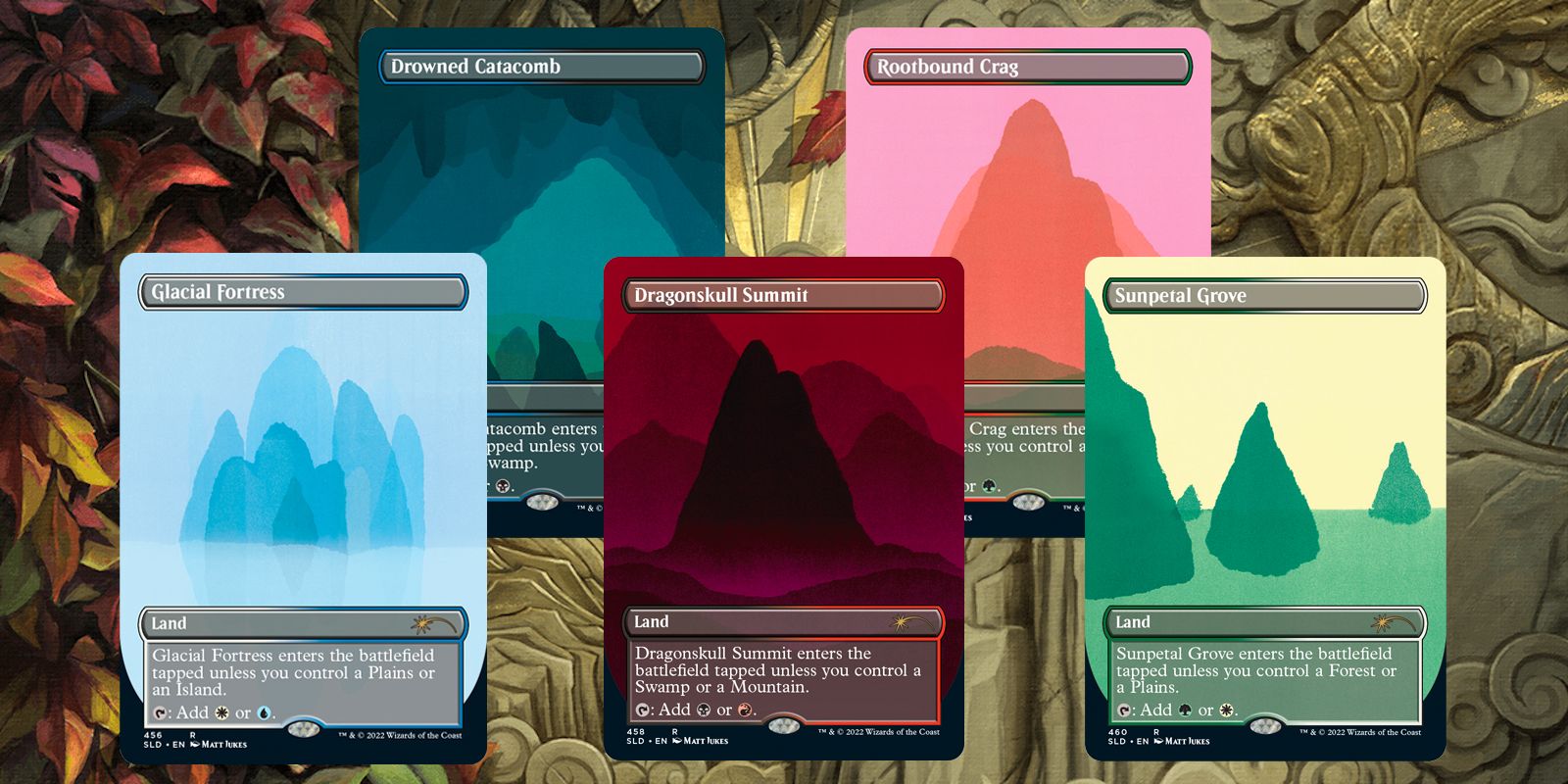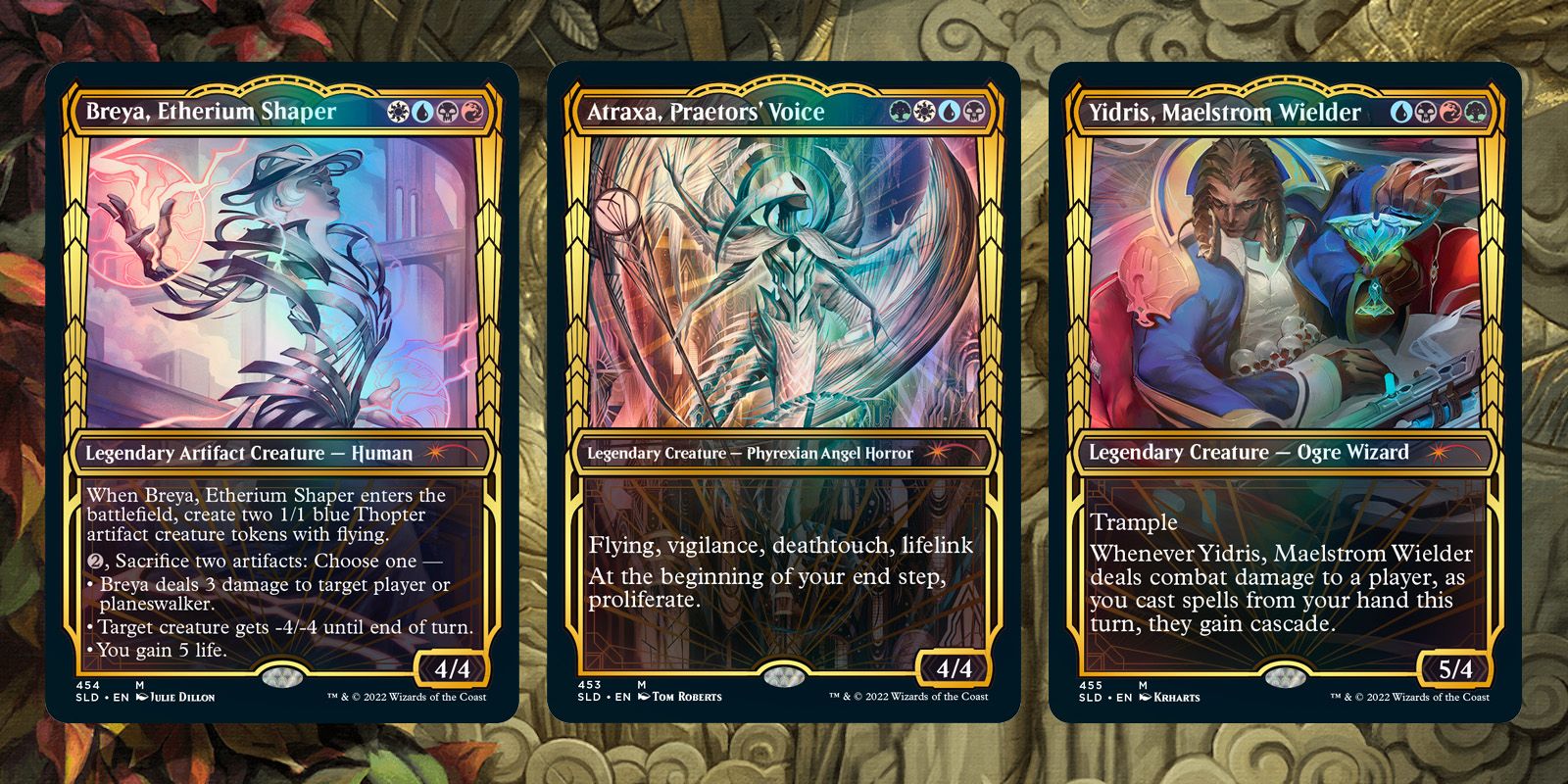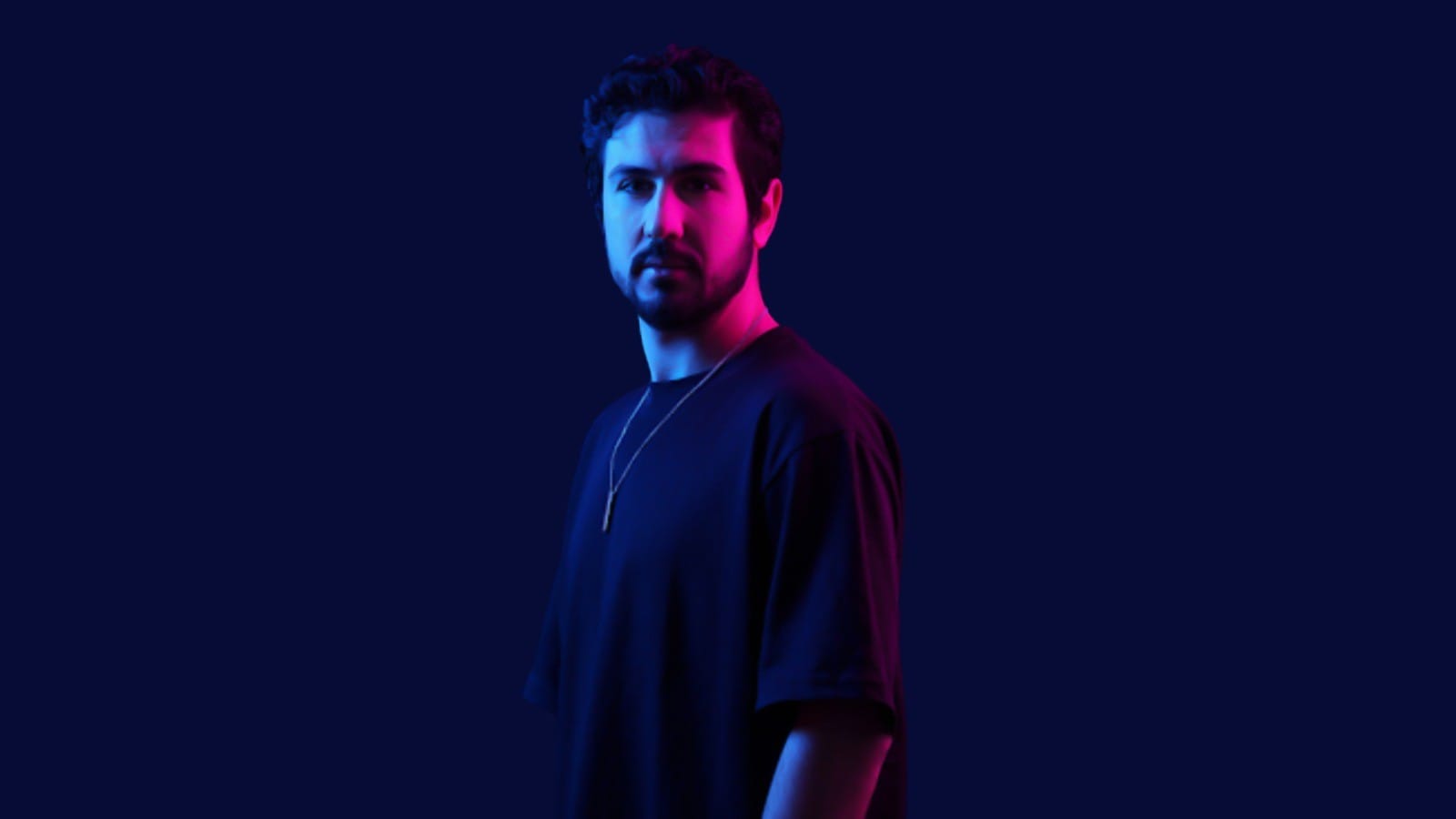April 2022 Superdrop is the latest entry, or series of entries, in the Secret Lair series of Magic: The Gathering products. Advertised as "miss a drop -- it's gone," Secret Lair is a limited-series direct-to-player product. These usually consist of three to five individual cards, sold together with some sort of unifying theme or art style. Secret Lairs also vary in price, with offerings usually ranging from $30 to $50. But the price and number of cards can skew outside of these ranges easily. Take, for example, some of the offerings from the April Superdrop. Players can buy five cards with Special Guest: Matt Jukes for $30. Or, they can buy four cards with Artist Series: Magali Villeneuve for the same price.
Both of these products cost the same amount to buy, so why does one contain five cards, and the other four? Players more interested in Villeneuve's art style are deprived of value, while Wizards gets to dodge the cost of commissioning and printing an extra card. For an even more egregious example, look at yet another Secret Lair in this month's Superdrop, Showcase: Streets of New Capenna Gilded Foil Edition. The Showcase offers three cards for the "low" price of $50. That's a full $10 more per card than for the five-for-$30 deal. So how does one explain this discrepancy? While the desirability of the gilded foil treatment certainly accounts for some of that cost, it's a stretch to say it makes each card worth $10 more.

To understand these price gouges, one has to first understand Magic's "secondary market." To get Magic cards, players usually buy "booster packs" of randomized cards, which in practice are like analog loot boxes. They might find cards they don't want or need, but that's inherent to the nature of the trading card game. Players are expected to trade cards amongst one another. Things get more complicated when they start buying and selling those cards. Suddenly opening a chase mythic from a four dollar booster pack can easily net $40 when sold to another player.
It's this value upon which Secret Lair bases its prices. Atraxa, Praetors' Voice usually goes for around $30 on the secondary market, where the "check lands" offered in Special Guest: Matt Jukes are closer to five dollars. Wizards of the Coast knows it can charge more for a Secret Lair featuring Atraxa, because the card is rarer and more desirable. The issue with that is twofold. For one, all cards cost Wizards of the Coast the same amount to print. The foil treatment might make it slightly more expensive, but the only reason any card is "rare" is that Wizards has declined to print many. It might not control demand, but it's certainly in charge of supply.

The second issue is that Wizards only pays attention to prices on the secondary market when it benefits them. If we look back to Artist Series: Magali Villeneuve, consider that one of the four cards on offer is a basic forest. Basic lands can hardly be said to be worth anything at all, and even a dime would be a fair price for one. But Wizards treats it the same as any other Secret Lair card, sometimes even selling a set of five basic lands for $30. The secondary market only seems to matter when it's to Wizards' benefit.
The problem here is consistency. If Wizards is taking the secondary market into account, Secret Lairs with basic lands should offer up a playset or even multiple playsets of each basic. But if all that matters is how many cards are being offered, every Secret Lair needs to be consistent in how many cards are being offered relative to price. If a Secret Lair costs $50, it should offer almost twice as many cards instead of sticking players with the extra cost.


